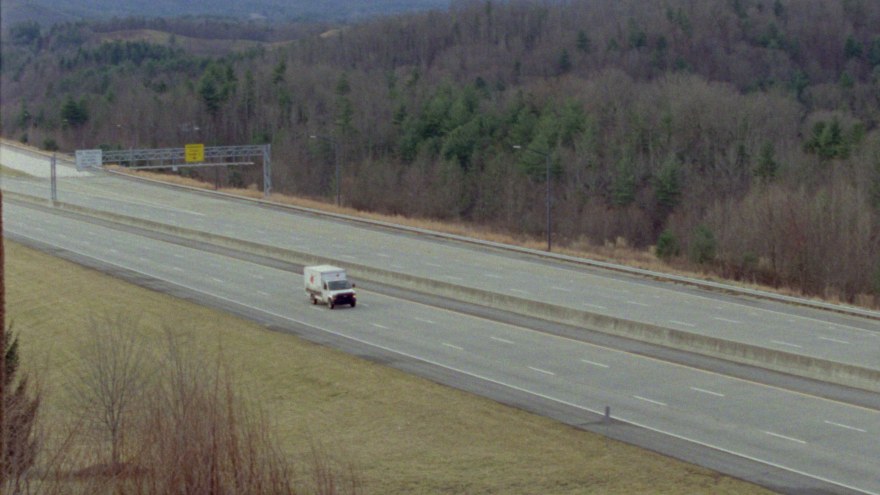Night cap with To Sonny
Interview with Maggie Briggs and Federico Spiazzi, codirectors of To Sonny
Who is Sonny? Is he based on someone you met in real life?
Maggie: The character of Sonny is loosely based on my own father, a vending machine loader himself in North Carolina, a man who after almost 40 years of being in the American workforce has become defined by his jobs and his stories from his time on the road. Before the politics, it’s about your average working American who, in his/her own right, is a hero.
What inspired you to tell his story? What would you like the audience to take from it?
Maggie: The first nuggets of the story were inspired by the anecdotes my dad would bring home from his various vending stops around my hometown, Asheville: an old lady flicking him off when he wouldn’t give her a free candy bar; an asshole real estate agent who treated him badly so he crushed up all their chips; the list goes on. The film, as most films do, evolved into something new when I started seeing my generally apolitical father becoming more and more vocal about his conservative views. I wrote the script in 2017 in the wake of the 2016 elections as I watched the people and the places closest to me become shrouded with hate and almost unrecognizable. With empathy rather than judgment, I wanted to tell the story of a regular man in this setting grasping anything that would allow him to understand his place in a changing world.
Tell us more about the casting process.
We were lucky to be able to cast locally in North Carolina by collaborating with Kevin Patrick Murphy, who runs The Actors Center of Asheville, a school focused in teaching acting for the screen to artists. After sifting through a lot of authentic southern actors, we fell in love with the face of Alphie Hyorth. Alphie’s interpretation of Sonny came through in his body language: a young, goofy vibe in the body of an older man with a certain physical and spiritual tiredness. He’s a big guy with a softness about him, an interesting contradiction of characteristics we felt we could see in Sonny.
How did the co-direction happen?
Federico: Maggie and I were classmates at Columbia University in New York, where she studied creative producing and I studied directing. Maggie wrote To Sonny to be her final thesis film for the program and, per Columbia rules, needed to bring on a director. Over the years, I have visited North Carolina several times with her and grown close to her home and to her family so the collaboration came about quite naturally. As we progressed in the process, we started to see our roles necessarily blending together. Her familiarity with the South, its slang and details added to my storytelling, made the shots come to life for us. It was a natural alchemy – not without arguments or differences of opinion, of course – but those moments of contrast were key to the final style of the film: mixing her intimacy and understanding of the subject and my more external, observational point of view.
What are your coming projects?
Federico: I’m prepping for a proof-of-concept short film based on my first feature in development. The story takes place in my home city, Verona, Italy, known to the millions of tourists who visit each year as the city of love and of Romeo and Juliet, but to the locals is a city with a violent and self-destructive truth. The protagonist of the story is a local teenager who has to navigate the schizophrenic identity of this city and of its people while searching for his own experience of love.
Maggie: I am currently planning for my next short film hoping to be shot this coming spring and am in development on my first feature film, Prone to Wander, another Southern Gothic tale told over a collection of seven sundays following a young girl’s hard fall into adolescence as she navigates her first love through conflicting lessons from her street and her church.
Are there any works of art or films that have inspired you?
In prepping for To Sonny, we were inspired by Schubert’s Winterreise, a beautifully apt story of a man on his own winter’s journey. It was playing in our apartment almost constantly. Once we started working down South, we dug the stories and songs of Country Western artists like Johnny Cash, Ralph Stanley, and Hank Williams. Visually, we drew from the photographs of Alec Soth, Angela Strassheim, and William Eggleston. In filmmaking, we studied more of the masters we already loved like Aki Kaurismaki and Abbas Kiarostami.
Would you say that the short film format has given you any particular freedom?
It’s only in a short film that a story’s structure is allowed to revolve solely around the portrayal of a character without wanting for too much in plot development. The observation and the discovery of a specific truth of a character can become, as is in our case, the main preoccupation of a film. We wanted our audience to know Sonny for a brief moment in time, empathize with him, and have a grasp of what a day in his life is like.
To Sonny is part of International Competition I7.








